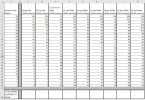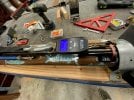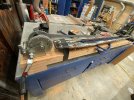Hey Guys,
I've been working on a Speargun Simulator for the last few months. I tried a few programs, but nothing was really shareable before I committed to learning Python/Django/CSS/HTML/JavaScript and renting my own server environment. This is the result:
Technica - Speargun Simulator (link)
These are the instructions on how to use it (link).
It works by equating the momentum and energies in these equations (link) that I derived as part of my thesis. I've tested 27 rubber samples from many manufacturers in various diameters to derive forces, energies and friction losses. Coronavirus has prevented pool testing so far, but the model should incorporate friction and hydrodynamic drag by the end of the year.
I'm looking to incorporate a graphical results display soon (something like the graph below), as well as a whole bunch of other features.

It's really good at quantifying the differences between two guns. For example, you can input two identical guns and change one parameter (eg shaft diameter) and see how it affects the performance (an example of this is linked here).
It's interesting to see how:
- The ratio of shaft weight to stock weight affects recoil,
- Conventional, roller and inverted guns compare to each other,
- Efficiency changes with different power systems and stock weights,
- The effect of various band diameters,
- Adding kicker bands adds or detracts from performance?
etc etc
I'd be keen to hear:
- Did you find any errors/manage to break it?
- How you think it could be improved?
- If there's any features you want added?
- Did you find any interesting trends or relationships?
JS.
I've been working on a Speargun Simulator for the last few months. I tried a few programs, but nothing was really shareable before I committed to learning Python/Django/CSS/HTML/JavaScript and renting my own server environment. This is the result:
Technica - Speargun Simulator (link)
These are the instructions on how to use it (link).
It works by equating the momentum and energies in these equations (link) that I derived as part of my thesis. I've tested 27 rubber samples from many manufacturers in various diameters to derive forces, energies and friction losses. Coronavirus has prevented pool testing so far, but the model should incorporate friction and hydrodynamic drag by the end of the year.
I'm looking to incorporate a graphical results display soon (something like the graph below), as well as a whole bunch of other features.
It's really good at quantifying the differences between two guns. For example, you can input two identical guns and change one parameter (eg shaft diameter) and see how it affects the performance (an example of this is linked here).
It's interesting to see how:
- The ratio of shaft weight to stock weight affects recoil,
- Conventional, roller and inverted guns compare to each other,
- Efficiency changes with different power systems and stock weights,
- The effect of various band diameters,
- Adding kicker bands adds or detracts from performance?
etc etc
I'd be keen to hear:
- Did you find any errors/manage to break it?
- How you think it could be improved?
- If there's any features you want added?
- Did you find any interesting trends or relationships?
JS.





